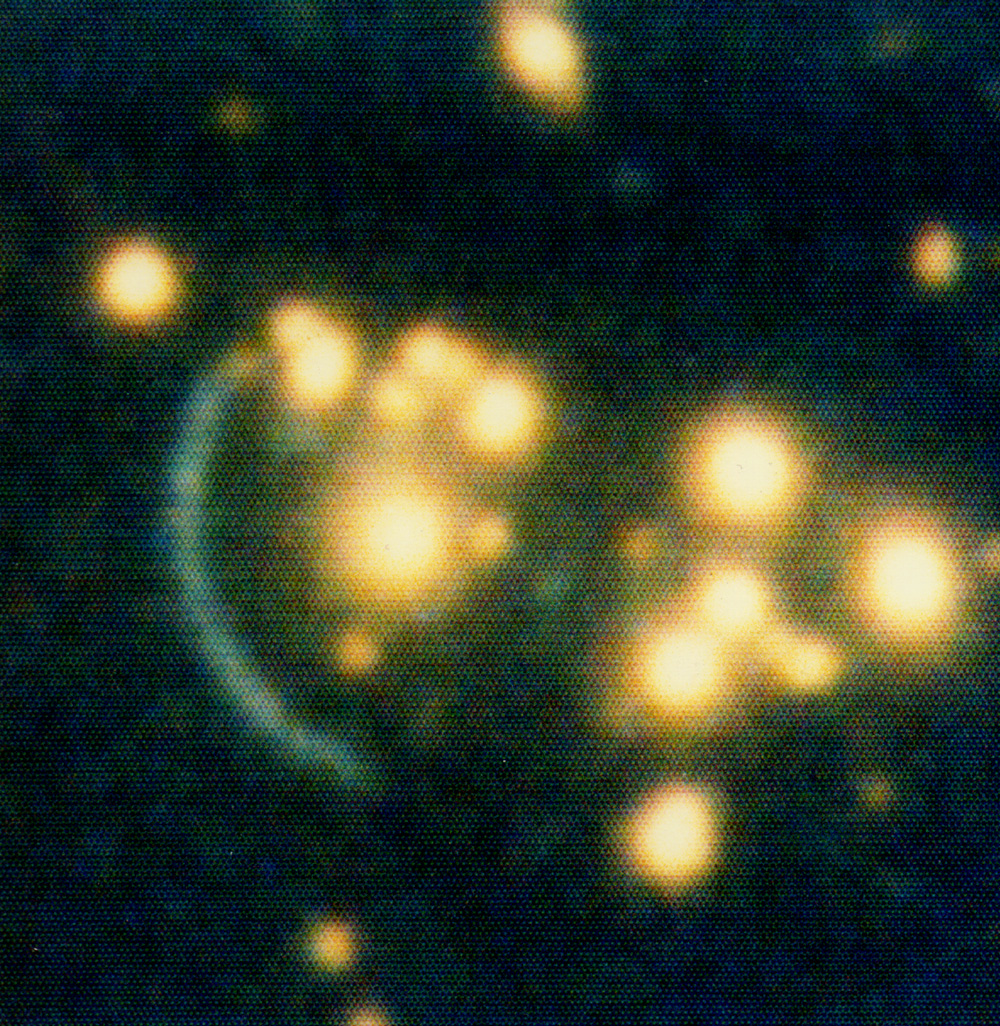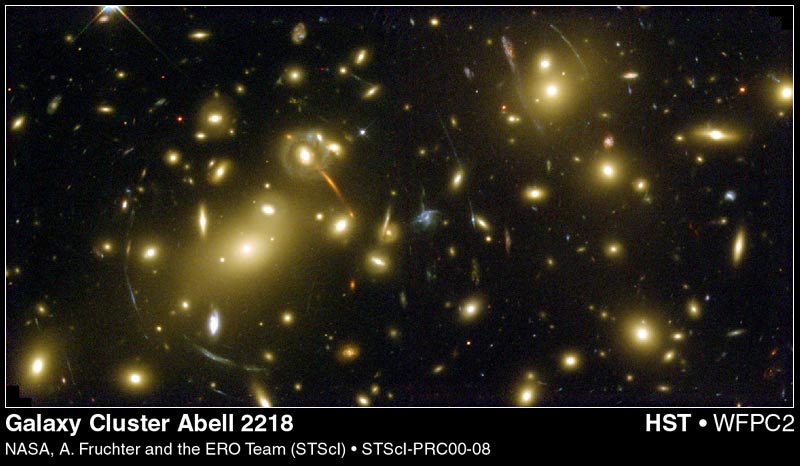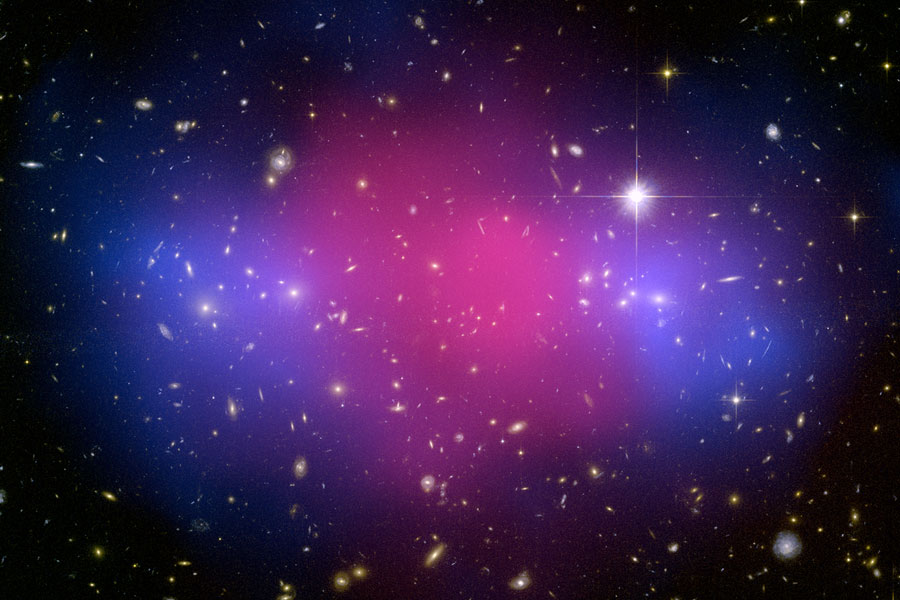This giant blue arc in galaxy cluster CL2244-02 is actually a distorted
image of a blue background galaxy about twice as far away as the cluster.
The cluster gravitational field acts like a giant lens producing a distorted,
magnified image of the background galaxy. Graviational lens images
like this can be used to trace the amount and distribution of dark matter
in galaxy clusters. All the yellowish red objects are
galaxies in the foreground galaxy cluster CL2244-02. The blue arc
and the small blue elongated dot in the middle of the image are highly
distorted images of a blue background galaxy. Three-color image processed
by Dr. Joseph H. Jones at CFHT, 1988.

Another example of a gravitational image: a more complete ring than
above, taken with the Hubble Space Telescope.

Another spectacular example of gravitational lensing through
a foreground galaxy cluster, imaged by the HST. Note the many galaxy
"arcs" (gravitational images of background galaxies by the gravity field of the
foreground galaxy cluster). These "arcs" can be used to map out the dark
matter distribution in a galaxy cluster. Generally the dark matter is
distributed in a similar manner to the luminous (normal baryonic) matter.

Finally, below is a HST image of two galaxy clusters caught in
the act of colliding (having passed through one another) and in the process
partially separating the dark matter and the normal matter. Notice the
many galaxy "arcs" surrounding the two galaxy clusters on either side of the
image. These have been used to map the dark matter contained in the two
clusters. The map of the dark matter is depicted in this image with the
diffuse purplish hue. Since dark matter only interacts with itself and
normal matter through gravity, when the two galaxy clusters passed through each
other the clouds of dark matter (and most of the individual galaxies) simply
passed by each other with no effect other than some gravitational perturbations.
However, the vast clouds of extremely hot but diffuse hydrogen gas that are
known to fill the space between galaxies in galaxy clusters, did "collide"
together halting their forward motions as the galaxy clusters passed through
each other. The X-ray emission from this hot cloud is shown in pink
(imaged by the Chandra X-ray Telescope) as it has been separated out from the
visible galaxies and the dark matter continuing away from each other on either
side of the image.

MACSJ0025
(designation for the two huge galaxy clusters in the image) contains hundreds of
galaxies, spans about three million
light years,
and lies nearly six billion light years away (redshift
0.59) toward the constellation of Monster Whale (Cetus).
(Caption and links taken from APOD: 20080917)


